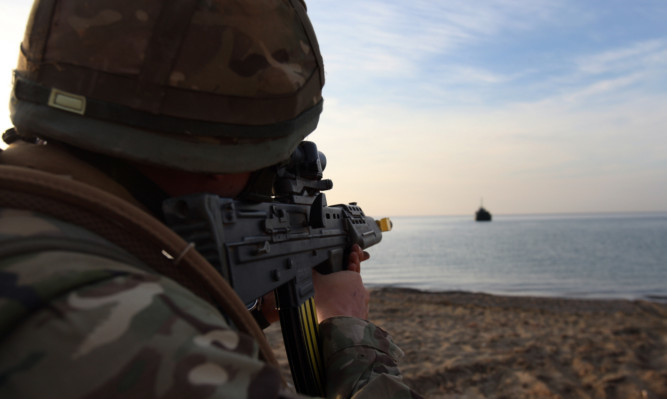A defence force in an independent Scotland could put its population “at very real risk” compared to staying in the UK, a report has found.
Scotland would have a limited defence force which would struggle to recruit and retain personnel, it would also be smaller than it is now and subsequently have a detrimental impact on jobs and economic growth, according to the report by the Scotland Institute.
The report also suggests post-independence Scotland would be more vulnerable to terrorist and cyber attack because it will need time to establish an intelligence body capable of dealing with these threats.
The panel of experts who produced the report, Defence and Security in an Independent Scotland, included senior armed forces personnel, defence academics, former secretaries of defence and senior officials from Nato, the UK MoD and the EU.
It was chaired by Major-General Andrew Mackay CBE, who commanded a task force in Afghanistan and served in the army for 27 years.
“I cannot see how slicing up a competent and well-established military will aid either the United Kingdom or an independent Scotland,” Major-General Mackay has written in the report’s foreword.
“Indeed, I see very real risks to the people of Scotland. It could be from the loss of jobs and the local economic impact that the inevitable removal of the Faslane naval base would bring.
“Or it could be the huge costs necessary to start building the armed forces from afresh.”
A Scottish Government spokeswoman said: “We have been clear that we will retain all current defence bases, including Faslane, which will be Scotland’s main conventional naval facility.
“Our long-term commitment will ensure continued support for jobs and local economies in all the communities around Scotland that are home to military bases.
“The Scottish Government is already taking steps to strengthen cyber security. Intelligence sharing with the UK would be in the best interests of the people of Scotland and of the rest of the UK.”
“An independent and non-nuclear Scotland’s membership of Nato would put the country alongside the 25 of the alliance’s 28 members which are non-nuclear.”
